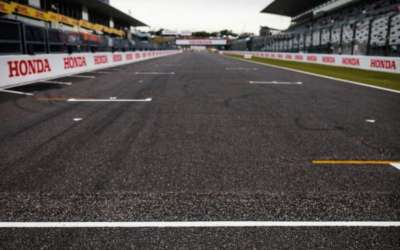We are eight races into the 2021 season, but only four of them have seen both Williams cars finish. Why is this, and what are the team doing to keep more dreaded DNFs at bay?
July 2, 2021
Formula 1 | George Russell | Nicholas Latifi | Teams | Technical | Williams
In a recent press day interview for the French GP, Charles Leclerc noted how he will have 53 laps to prove himself around Paul Ricard, however Williams driver George Russell cut in, joking that he would only end up with 51 or 52 laps himself. Incidentally, Russell did manage to finish the French GP, coming in an impressive 12th, ahead of Leclerc’s Ferrari, an Alpha Tauri, an Alpine and both Alfa Romeos.
Despite his success at Paul Ricard, this jibe at the reliability of the Williams cars from Russell is not unfounded. Of the eight races that have taken place so far in the 2021 season, only four of them have seen both cars finish. Russell himself has had to retire due to a gearbox failure in Baku and an air pressure issue with the power unit in Styria, costing him what could have been his first points in a Williams. The Brit also retired at Imola, however this was due to an unforgettable collision with the Mercedes of Valterri Bottas.

George Russell driving in the Baku GP before his retirement (Photo via @williamsracing on Instagram)
Nicolas Latifi has likewise experienced reliability issues, retiring from the Sakhir GP due to a suspected boost leak with the power unit.
Whilst it is abundantly clear that the majority of teams are focusing more on the development of next year’s cars, this generally has not seen a decrease in reliability. It is also an issue which specifically relates to the Williams team. Williams have endured 33% of all the reliability related retirements as of the Styrian GP. A reliability retirement is defined as a fatal problem with the car which is not caused by a driver fault or collision.
It is difficult to compare the 2020 season to the 2021 season due to the disruption which the pandemic caused, however the similarities between the cars allows for some analysis of reliability. By round eight of 2020, Williams only had one reliability retirement due to an issue with fuel pressure.
It begs the questions, what is happening to cause Williams such a headache? They are renowned for being a particularly efficient team, with fast pitstops and recently some successful race strategies. This season was meant to offer some stability for the team as they focus on the 2022 regulation changes. The acquisition by Dorilton Capital secured the team financially by bringing new funding (around £150 million) and paying off a backlog of debts. Furthermore, this change in ownership came as a result of an extensive Strategic Review conducted in May of 2020. The review ensured that the new owners would maintain and respect the heritage of the Williams brand. So far, this has been the case; Dorilton have upheld the Williams brand and kept the location of the headquarters in Grove. It would seem that there has not been any major upset as a result of the new ownership which could warrant a drastic variation in the car itself.
Of course, this change in ownership has been reflected in the leadership of the team. Initially, Dorilton brought in Jost Capito as CEO, Simon Roberts as team principal, Francois-Xavier “FX” Demaison as Technical Director and Willy Rampf as a technical consultant.
Williams CEO and new Team Principal Jost Capito (Photo via formula1.com)
In June, it was announced that Simon Roberts would step down as team principal, with Capito taking over his role. The alteration in leadership appears to be amicable and perhaps signals a desire to streamline their executive decision making processes. This change also brings Demaison and Capito closer together. The two previously worked for Volkswagen for three title-winning years; their collaboration can only be to the Williams team’s benefit.
This reassignment of leadership within the team highlights both the root of the issue and solution for Williams’ reliability problems. In an article by for F1, Lawrence Barretto draws a similar conclusion, “It quickly became clear that there was a major problem with the technical structure, with the track and plant engineering not aligned. They were reporting to different channels.” Now that the track team and factory engineering teams are more closely aligned and the executive silos have been broken down by combing leadership roles, this could signal an upwards bump in results. Whereas before, there was the feeling of the team floundering in the constant battle with the ceiling performance of their cars, these big changes will hopefully bring clarity to the reality of their situation.
Williams drivers Nicholas Latifi and George Russell at the Monaco GP (Photo via @williamsracing on Instagram)
The results of the reshuffle will only become clear as the season unfolds. It is safe to say the issue for Williams is not with their drivers. Russell has at many points exceeded the expectations of what any driver could achieve in the car he has been provided with. Even Latifi, with a reputation for dwelling around the rear of the pack, has shown some marked improvements, getting into Q2 at Emilia Romagna and narrowly missing out on Q2 at Styria. Although it is interesting to consider the future of the drivers in the development of Williams into 2022. There have been a number of suggestions that if the team are to take the next year of racing seriously, they will reconsider Latifi’s seat, now that his financial backing is not so crucial with the support of Dorilton. Furthermore, if Russell does leave, they will not be able to fall back on his ability to bring performance to the car. That conversation, however, is one which must be had later in the year as the driver market heats up.
For now, it will be interesting to see if reliability becomes less of an issue as Capito fully takes the reins. It is crucial that Williams displays the capability to follow an upwards trajectory in order to maintain the interest of Dorilton Capital. Afterall, Formula 1 is excellent at turning billionaires into millionaires, and without a long-term strategy, the survival of any F1 team is not guaranteed.
ABOUT THE AUTHOR

One of Ellie’s earliest memories growing up is watching formula 1 on television with her Dad. She recently graduated the University of Manchester studying Latin and English Literature. Currently, she is interning full time for a major British news publication as a junior editor. Ellie is particularly interested in the marketing and management side of motorsports. She also spends her time singing in choirs and visiting the latest London art exhibitions! You can find her on twitter at @zephyrellie.
Related Articles
Navigating the Future of Formula 1: Reserve Drivers and Their Path to a Full-Time Seat
ATRL's Tiegan Batchelor explores the world of reserve drivers' F1 prospects. Oliver Bearman's standout performance highlights the talent of these drivers, yet the road to a full-time seat remains uncertain due to financial constraints and fierce competition.In the...
Hitting the Apex: Misano E-Prix
Formula E is back in Italy at a new track! ATRL's Eline Luna previews the Misano World Circuit Marco Simoncelli.For the second time this season, Formula E travels to a new circuit. Formula E has raced in Italy since 2018, with all races being held at Circuito...
Hitting the Apex: Circuit Suzuka
It's Japanese Race Week! Read on for everything you need to know about the Circuit Suzuka.Circuit Suzuka, officially named Suzuka International Racing Course but often referred to as Suzuka, is a racing circuit located near Suzuka City in Japan. Plans for a racing...
Stay Up to Date With The Latest News & Updates
Interested in Writing for ATRL?
Contact us now! Fill out the form below and wait for an email from us to get started.
Join Our Newsletter
Subscribe to updates when we post a new article!
COMING SOON!
Follow Us
Follow us on Twitter @ATRacingLine
Instagram coming soon.




Recent Comments